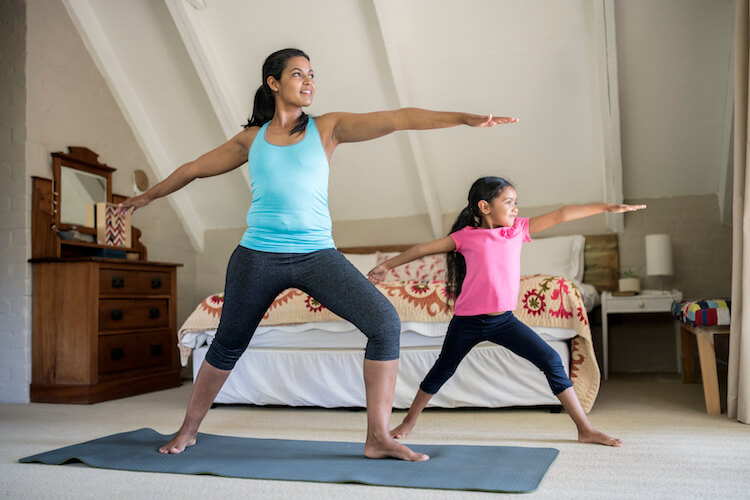Seeing your children glued to their screens all day? Are you looking for ways to get them moving and active? Look no further!
In this article, we will explore the importance of physical activity for children and kids ages, and discuss various kid-friendly workouts that will make fitness fun for your little ones. Let’s dive in!
Understanding the Importance of Physical Activity for Children

Physical activity plays a crucial role in your child’s development. Not only does it promote a healthy lifestyle, but it also improves their overall well-being. Research has shown that regular exercise can enhance your child’s cognitive function, boost their self-esteem, and reduce the risk of chronic diseases such as obesity and diabetes.
When it comes to child development, exercise is not just about building strong muscles and bones. It goes beyond the vigorous physical activity aspect and contributes to your child’s mental and emotional growth as well. Physical activity stimulates the brain, leading to improved concentration and academic performance. It helps children develop vital life skills such as teamwork, perseverance, and problem-solving.
Moreover, the health benefits of regular physical activity for kids are numerous. Not only does it help them maintain a healthy weight, but it also strengthens their cardiovascular system, improves their flexibility, and boosts their immune system. By engaging in physical activities, children develop stronger muscles and bones, reducing the risk of injuries. Furthermore, exercise promotes better sleep patterns, reduces anxiety and stress, and enhances their overall mood and happiness.
The Cognitive Benefits of Exercise
Regular physical activity has been found to have a positive impact on children’s cognitive abilities. When children engage in exercise, their brains release chemicals called endorphins, which are known to improve mood and reduce stress. This, in turn, leads to better focus and concentration, allowing children to perform better academically. Studies have also shown that physical activity can enhance memory and information processing, making it easier for children to learn and retain new information.
Additionally, aerobic exercise promotes the growth of new brain cells and improves the connectivity between different regions of the brain. This enhanced brain function can have long-term benefits for children, as it sets a strong foundation for their cognitive development and academic success.
The Emotional and Social Benefits of Exercise
Physical activity not only benefits children’s physical health but also has a significant impact on their emotional well-being. Engaging in exercise releases endorphins, which are natural mood boosters. This can help reduce feelings of anxiety, stress, and depression in children, promoting a more positive outlook on life.
Furthermore, participating in physical activities provides children with opportunities to socialize and interact with their peers. Whether it’s playing team sports, joining a dance class, or simply running around in the park, these activities foster social connections and help children develop important social skills. Through teamwork, cooperation, and communication, children learn how to navigate social situations and build lasting friendships.
The Long-Term Health Benefits of Exercise
Encouraging your child to engage in regular physical activity from a young age can have long-term health benefits. By establishing healthy habits early on, you are setting the stage for a lifetime of good health. Regular exercise helps children maintain a healthy weight, reducing the risk of obesity and related health issues such as heart disease and diabetes.
Moreover, physical activity strengthens the cardiovascular system, improving heart and lung function. This, in turn, enhances overall fitness and endurance, making it easier for children to engage in daily activities and participate in sports. Additionally, exercise improves flexibility, and muscle strengthening which can help prevent injuries and promote better posture.
Furthermore, engaging in physical activity boosts the immune system, making children less susceptible to common illnesses such as colds and flu. Regular exercise also promotes better sleep patterns, allowing children to get the rest they need for optimal growth and development.
Physical activity is not just important for children’s physical health but also plays a crucial role in their cognitive, emotional, and social development. By encouraging your child to engage in regular exercise, you are setting them up for a lifetime of good health and well-being.
Making Fitness Fun: Types of Kid-Friendly Workouts

Now that we understand the importance of physical activity, let’s explore some fun and engaging workouts that your kids will love!
Physical activity is crucial for children’s overall health and well-being. It not only helps them maintain a healthy weight but also promotes strong bones and muscles, improves cardiovascular fitness, enhances coordination and balance, and boosts their mood and mental health. Encouraging your kids to be active from an early age sets them up for a lifetime of healthy habits.
Indoor Exercises for Children
When the weather outside is less than ideal, indoor exercises can be a great way to keep your kids active. Activities like dancing, yoga, and even simple exercises such as jumping jacks or push-ups can be done in the comfort of your own home. Dancing not only gets their bodies moving but also allows them to express themselves creatively. Yoga, on the other hand, promotes flexibility, strength, and mindfulness.
To make indoor exercises more enjoyable, you parents can consider playing upbeat music that your kids love. You can also turn exercise into a game by setting up challenges or creating an obstacle course using pillows, cushions, and other household items. This not only adds an element of fun but also helps improve their motor skills and problem-solving abilities.
Outdoor Activities to Get Your Kids Moving
When the sun is shining and the birds are singing, outdoor activities offer an excellent opportunity for your kids to engage in physical exercise while enjoying nature. Take them to the park for a game of tag or soccer. Running around, chasing each other, and kicking the ball not only gets their legs and hearts pumping but also improves their agility and coordination.
Exploring local hiking trails is another fantastic outdoor activity that combines exercise with an appreciation for nature. Hiking not only provides a great cardiovascular workout but also exposes your kids to the wonders of the great outdoors. They can learn about different plants, animals, and ecosystems while enjoying the fresh air and beautiful scenery.
If you have access to bicycles, going for a bike ride as a family is a wonderful way to bond and stay active. Cycling not only strengthens their leg muscles but also improves their balance and cardiovascular fitness. You can explore new neighborhoods, visit local parks, or even plan a picnic along the way.
Remember, the key to making fitness fun for kids is to let them choose activities they enjoy. Whether it’s dancing, hiking, or playing sports, find what sparks their interest and encourage them to participate regularly. By incorporating physical activity into their daily routine, you are setting them up for a lifetime of health and happiness.
Incorporating Exercise into Your Child’s Daily Routine

Making physical activity a part of your child’s daily routine is essential for establishing healthy habits. Regular exercise not only promotes physical fitness but also contributes to overall well-being. Here are a few tips to help you incorporate exercise into your child’s day-to-day life:
Making Physical Activity a Family Affair
Get the whole family involved! Plan activities together that everyone can enjoy. Take walks after dinner, have a friendly game of basketball in the backyard, or go on weekend bike rides as a family. By making exercise a fun and inclusive experience, you not only promote physical fitness but also strengthen family bonds.
Engaging in physical activities as a family has numerous benefits. Not only does it provide an opportunity for everyone to stay active, but it also creates lasting memories and fosters a sense of togetherness. These shared experiences can strengthen family relationships and promote open communication.
Additionally, involving children in family activities can help them develop important social skills. They learn how to cooperate, communicate, and work as a team. These skills are not only valuable in physical activities but also in other aspects of their lives, such as school and friendships.
Turning Chores into Workouts
Did you know that everyday chores can be an opportunity for your children to get moving? Assign them household tasks that require physical effort, such as mowing the lawn, vacuuming, or sweeping. Not only will they learn responsibility, but they will also burn some calories in the process!
Turning chores into workouts not only benefits your child’s physical health but also teaches them valuable life skills. By assigning them age-appropriate tasks, you help them develop a sense of responsibility and independence. They learn how to take care of their environment and contribute to the well-being of the family.
Moreover, incorporating physical activity into chores can make them more enjoyable for your child. Instead of perceiving chores as boring or tedious, they can view them as opportunities to stay active and have fun. You can even turn cleaning sessions into mini dance parties, where your child can groove to their favorite tunes while tidying up!
Encouraging your child to be physically active throughout the day is crucial for their overall development. By making exercise a part of their daily routine, you are instilling healthy habits that can last a lifetime. Remember, every little bit of movement counts, so find creative ways to keep your child active and engaged!
Overcoming Obstacles to Physical Activity in Children

While it’s important to encourage physical activity in children, we understand that there can be obstacles along the way. Let’s address some common excuses and challenges and find ways to overcome them.
Addressing Common Excuses for Not Exercising
Children often come up with creative excuses to avoid exercising. “I’m too tired,” “I don’t have time,” or “It’s too boring” are common phrases you may hear. One effective way to overcome these excuses is by setting a positive example. Show your children that you prioritize exercise by engaging in physical activity yourself. Lead by example, and they are more likely to follow suit.
Additionally, it’s important to make physical activity fun and engaging for children. Incorporate activities that they enjoy, such as playing their favorite sports or games. By making exercise enjoyable, you can help them overcome the perception that it’s boring or tedious.
Another strategy is to involve the whole family in physical activities. Plan regular outings each week or weekend adventures that involve movement, such as hiking, biking, or playing at the park. By making exercise a family affair, you can create a supportive and motivating environment for your children.
Dealing with Screen Time and Sedentary Behaviors
In today’s digital age, it’s no secret that screens can be a major obstacle to physical activity. Limiting screen time and encouraging active alternatives is crucial. Set reasonable limits on electronic device usage and encourage your children to participate in physical activities before or after screen time.
One way to reduce sedentary behaviors is by incorporating physical activity into everyday routines. Encourage your children to walk or bike to school instead of taking a car or bus. If they need to use a computer or watch TV, suggest doing so while standing or engaging in light exercises, such as stretching or doing simple yoga poses.
Consider introducing your children to new hobbies or sports that capture their interest. Whether it’s dance, martial arts, swimming, or rock climbing, finding an activity they enjoy can help them break away from sedentary habits. Encourage them to join local sports teams or clubs where they can meet other children with similar interests.
It’s also important to create a screen-free zone in your home, such as a designated play area or outdoor space. This will help promote physical activity and provide a space where your children can engage in active play without the distractions of screens.
By addressing common excuses for not exercising and finding creative ways to overcome them, you can help your children develop a lifelong love for physical activity. Remember, it’s not just about the physical benefits, but also the positive impact on their overall well-being and mental health.
Encouraging a Lifelong Love of Fitness

Instilling a love for fitness at an early age can have long-lasting effects on your child’s health and well-being. Here are some strategies to foster a positive attitude towards exercise:
Teaching Kids the Joy of Movement
Make exercise a joyful experience for your children. Let them explore different types of physical activity and find what they enjoy the most. Whether it’s dancing, swimming, or playing a sport, helping them discover activities they love will make them more likely to engage in regular exercise throughout their lives.
Fostering a Positive Attitude Towards Exercise
A positive attitude towards exercise starts with positive reinforcement. Praise your children for their efforts, no matter how small. Encourage them to set goals and celebrate their achievements. By creating a supportive and encouraging environment, you will nurture a lifelong love of fitness in your little ones.
In conclusion, getting your children active is crucial for their physical, mental, and emotional well-being. By understanding the importance of physical activity, incorporating fun and engaging workouts, overcoming obstacles, and fostering a positive attitude towards exercise, you can set your children on a path towards a healthy and active lifestyle. So, let’s get younger kids moving and make fitness a part of your family’s routine!

